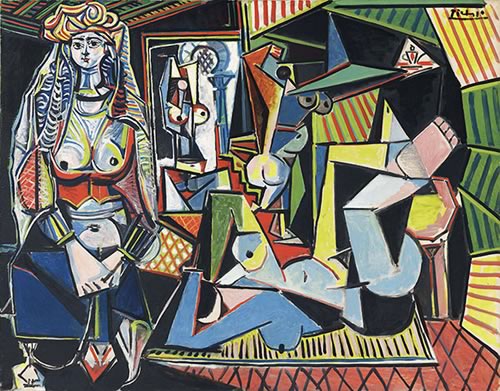Ever wonder what art collectors collect? The characteristics of collectible art are worth further examination, especially if you are considering becoming a collector in the art business.
Personal taste, trends in the art market, quality, and the ability to establish authenticity and provenance are some of the reasons one work makes its way into an art collection and not another, but in this article, we’ll look at a number of collectible mediums.
You’ll find other helpful information in our art collectors guide.
Illustrations
While Leonardo da Vinci is best known for his Mona Lisa painting, found at The Louvre in Paris, he’s also quite well-known for illustrations ranging from anatomy to scientific pursuits. The Vitruvian Man is held within the collection of the Gallerie dell’Accademia in Venice, Italy, and has been shown publically periodically including at the Louvre from 2019 to 2020. But lesser-known illustrations are collectible as well such as his Codex Arundel which belongs to the British Library’s collection and can be perused online.
So illustrations by artists best known for other mediums are one option for your art collection and may be more affordable than works that take longer to produce such as paintings or sculptures. Special care may be required for illustrations on paper, especially if we’re talking about centuries-old parchment. The Vitruvian Man is not frequently displayed publicly for this reason.
Works by artists best known for illustration are another option. Christie’s currently offers a number of original illustrations for sale in “‘That’s America!’: a collector’s guide to American illustrators.” You’ll find magazine illustrators from the turn of the last century such as Norman Rockwell available for purchase.
If more modern illustrations are your interest, you’ll find sites like Comic Art Tracker claim to have over 300,000 original works for sale including Calvin & Hobbes and various Marvel and DC titles. You can find more art that art collectors like from more popular series that have sold for hundreds of thousands of dollars.

Sculptures
Whereas Leonardo is better known for paintings and illustrations, other Renaissance masters such as Michaelangelo and Donatello produced sculptures now held by museums. The obvious challenge with collecting sculptures is their 3-dimensional nature, size, and weight.
Many sculptures are of sufficient size that a single person in good health can’t reasonably move them alone. Purchasing a sculpture may require arranging transportation from one site to another and separate arrangements for assistance with installation. Sheer weight may preclude shipping sculptures by airplane. Their design may also require complex crating in order to transport them without causing a stress-induced crack in the material.
Would you know how to transport a $12 Million Stuffed Shark by Damien Hirst?
Like other collectible pieces of art, special care must be made to be sure they are not placed where they will be damaged once a sculpture reaches its final destination at an art collector’s desired location. The placement of a sculpture is generally more permanent than other pieces such as drawings and paintings, which may easily be displayed and then safely stored.
For someone or an entity looking to add statues like Macon’s Otis Redding Sculpture to a collection, being well-connected with art buyers, dealers, and auction houses is a good idea.
Given the logistical constraints mentioned above and the time an artist puts into a sculpture, a collector may also decide to explore commissioning a sculpture, even having the artist assemble it in part or in full at the desired location. More famous sculpture collections that travel such as Chihuly Glass have specialized teams that travel with the pieces and install them at the various places at which they will be on display.
Paintings
Paintings are the most purchased form of art by original art collectors for many reasons including their combination of durability, portability, and having a shape that lends itself to easy storage.
A diverse collection of acrylic, oil, watercolor, ink paintings, and more are found in private collections. More contemporary artists introduce additional materials such as glass, photographs, plastic, metal, and other materials onto the canvas, sometimes partially covered with paint.
When you think of the most collectible modern artists other than Hirst and Koons, painters seem to dominate the landscape: Picasso, Dalí, Warhol, Pollock, and others are the types of names you’ll hear in the art news about big prices paid at auctions. Banksy and other street artists have had some of the most celebrated shows of recent years.
There are lots of ways art collectors can purchase paintings. Dealers and auction houses dominate the most expensive echelon of collectible artists, but more affordable pieces make their way through physical art galleries, co-op art galleries, and annual shows such as Art Basel, which now has versions in Miami, Hong Kong, and Paris as well.
If you’re looking to buy from a more local or regional artist, keep in mind that purchasing through intermediaries often means 50% of the purchase price will never make its way to the artist.
An art collector can hold many paintings within a single gallery room and even more in a climate and light-controlled storage area, so paintings are a great medium for someone who wants to rotate art at home periodically or share it externally for gallery shows and other events. As with other mediums, it’s important to do your research and be sure any paintings you are adding to your collection have clear provenance and fit with your desired themes.
NFTs
Caution: NFTs as a collectible form of art are covered here because the mainstream press and galleries like Sotheby’s don’t understand the technology. Yes, there are certain artists who have created NFTs that have sold for lots of money in 2020-2022, but if you’re wanting to collect NFTs with the expectation that you’ve made an investment, be sure you keep reading.
Unlike the digital Etchings found on ETChster that point at tangible art, NFTs are digital files that reference other digital files. Instead of a URL/link in a webpage, there’s a URL stored on an entry on a blockchain, and that entry also has a reference to a digital wallet that owns the NFT.
In theory, if you own the NFT, you own the digital file to which it refers via the hyperlink. The logic that holds the whole project together is flawed in so many ways.
Unlike tangible original artworks, even if you believe you own the referenced digital file, you own something that is neither original nor scarce. Digital files such as jpgs, pngs, mp4s, and others can and are cloned infinite times without any loss of fidelity. Some of the more famous NFT projects such as Bored Apes are quite transparent in that they are releasing 10,000 NFTs at a time. Is there another form of art where an artist can produce 10,000 pieces with minimal effort?
Fraudsters minting and selling NFTs of someone else’s work on the sites like Opensea is another major problem. The buyers are not understanding how to establish provenance.
If you’re wanting to speculate in NFTs, be sure you understand the other problems with NFTs as well.
Conclusion
Setting aside NFTs (which may be relegated to the technology landfill within the next few years), the art mediums above are fantastic for any art collector. Collectors will find pieces with which they can build a relationship. A single piece can bring years of enjoyment and make a home, office, or public space more enjoyable.
For those looking beyond their personal enjoyment, collectible art has consistently increased in value over the years as well. While it is definitely considered an “alternative investment,” having collectible pieces with solid provenance is a great way to diversify an investment portfolio.
So how will you start your art collection? You’ll find original works of art from thousands of global artists in the ETChster community, so be sure to start your research.



